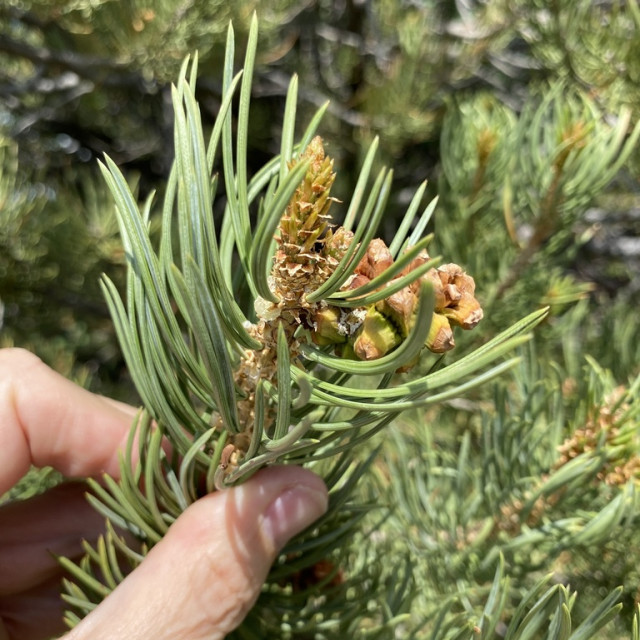COMMON NAME
Colorado pinyon
SCIENTIFIC NAME
Pinus edulis
ALSO KNOWN AS
mesa pinyon, two-leaf pinyon
Plant family
Pine (Pinaceae)
Plant group
Conifers
Pinyon pines are short branched evergreen perennial trees or shrubs native to southwestern United States.
60 reports
35+
OBSERVERS
60+
OBSERVATIONS
Identification hints
Colorado pinyons are evergreen trees or shrubs sometimes called two-leaf pinyon because dark green needles are bundled in twos. Although it can grow up to 70 feet (21 m) tall, it is usually a short branched tree and can also be a shrub. Its cones do not have spines. Other pinions, which are found in the southwestern US, usually have different numbers of needles in each bundle (fascicle).
Did you know?
Colorado pinyon is one of nine dominant species in pinyon-juniper woodlands, an important forest ecosystem in the arid southwest of North America. Tress are frequently over 750 years old. The edible seeds, known as pinyon nuts, are highly prized for their delicate flavor. The seeds are harvested in the wild and sold commercially, and were once a staple food for Indigenous people of the region. Colorado pinyons are the most abundant tree on the south rim of the Grand Canyon.
DISTRIBUTION IN TH U.S.
Arizona
,
California
,
Colorado
,
New Mexico
,
Nevada
,
Oklahoma
,
Texas
,
Utah
,
Wyoming
HABITAT
Colorado pinyon is found in intermountain region of Wyoming, Utah, Colorado, Arizona and New Mexico east to Oklahoma and Texas. It does well on dry, rocky soils and is often found mixed in with juniper on rocky mesas, plateaus, and dry, mountain slopes. The species tolerates very dry and cold conditions and a range of soil types from sandy to clay.
ATTRIBUTES
Leaves
Leaves are dark green to blue-green needles that persist for 4-6 years and are typically bundled in pairs.
Pollen Cones
Pinyon pines have cones that are found in clusters at the end of the branches. The pollen cones are ellipsoid and range in color from yellow to dark reddish-brown, typically found in clusters.
Seed Cones
Seed cones mature over two years. Seed cone scales start out thick and fleshy when green, then turn reddish brown later. They are arranged in clusters of 2-3 and contain small edible oily seeds that are typically eaten by wildlife or harvested for use by humans.
Bark
The bark is shallow and irregularly furrowed. It is gray to reddish-brown. The trunk is often twisted and crooked. Twigs are smooth but become rough and scaly branches as they mature.
Bloom Time
Bloom time is typically April and May. First year cone development stops around the last week of August. Cones reach their full size in July and mature by September of their second year. In late September and October cones begin to open and seeds are dispersed.
See Menu
- 2021 Chicago Botanic Garden. All Rights Reserved.
-
Creative Commons
BY-NC-SA 4.0 - Terms of Use
- Privacy Policy
- Data Sharing and Citation Policies
- 2021 Chicago Botanic Garden. All Rights Reserved.



